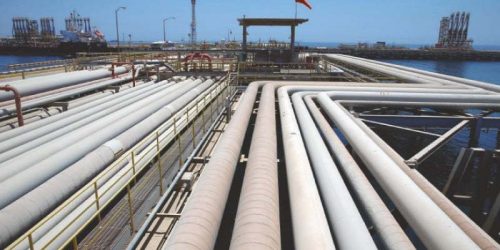ISLAMABAD: Amid growing number of suppliers competing for pipeline and terminal capacity, the Cabinet Committee on Energy (CCoE) on Monday constituted a subcommittee to examine in detail the availability of pipeline capacity and how to allocate it for transportation of re-gasified liquefied natural gas (RLNG).
Informed sources said the CCoE met briefly under the chairmanship of Minister for Planning and Development Asad Umar as some of the relevant stakeholders were based in Karachi and appeared to be unable to optimally contribute through video conference.
Therefore, Mr Umar constituted the subcommittee led by himself and comprising ministers and special assistants of the ministries of energy and maritime affairs to examine the entire natural gas/LNG supply chain and firm up within 10 days a holistic way forward on the issue.
The sources said that with the completion recently of a 17-kilometer pipeline from Port Qasim to SSGCL’s Pakland tie-in point, the overall pipeline capacity for transportation of LNG had improved by 500-600mmcfd (million cubic feet per day). However, the LNG re-gasification capacity at the existing two terminals is limited.
At the same time, two prospective investors of LNG terminals, which had recently been given sales and marketing licences by the Oil and Gas Regulatory Authority (Ogra), plan to set up their own terminals expected to come online within two years. In the meanwhile, they want unutilised capacity owned by government entities in the short term to meet the demand of their dedicated consumers.
On the other hand, Ogra has also granted virtual pipeline licences to two more companies — LNG Easy to be based at Port Qasim and Daewoo Gas at Gwadar — to move their LNG through bowsers.
While these new developments take shape, the gap between demand and supply of gas is expanding and the government has made fresh policy adjustments in terms of gas supply to various sectors and will have to disconnect gas supply to various categories of captive power plants.
According to a summary, the Ministry of Maritime Affairs has proposed to the CCoE that to provide capacity in the existing pipeline to new LNG developers and to attract foreign investment, “if there is any pipeline capacity in the existing pipeline network, it may be used by the government importing LNG itself till the time new terminals are commissioned” and then the existing pipeline capacity could be transferred to new terminals.
Secondly, any capacity, whether ‘unutilised’ or ‘excess’, should be offered to private parties only on a short-term three-month forward visibility basis, after approval from the relevant stakeholders, the ministry said.
It said that as highlighted by the Ministry of Energy (Petroleum Division) based on the decisions of the Economic Coordination Committee (ECC) of the cabinet, gas utilities should be directed to share draft Gas Transmission Agreement (GTA) with both the new LNG terminal developers — Tabeer Energy and Energas.
The meeting was informed that a cabinet meeting had on Aug 2, 2019 decided that provisional Letter of Intent (LoI) would be issued to all five applicants for terminal operators who had conducted relevant surveys on the sites assigned to them.
The Port Qasim Authority (PQA) issued the LoI to the five terminal operators. Two of them — Energas Terminal (Pvt) Limited and Tabeer Energy (Pvt) Limited — accepted the terms and conditions and deposited $2 million each as part of a concession fee (out of total $10m each) with the remaining $8m to be deposited upon signing of implementation agreement.
The summary said the maritime affairs ministry had in collaboration with the Petroleum Division facilitated the new LNG terminal developers in securing NOCs (no-objection certificate) from various agencies and ministries for completion of new LNG terminals. Allocation of capacity in the existing as well as planned gas pipeline to transmit LNG from new terminals and grant of NOC by the Ministry of Defence took time.
On the directives of the cabinet, the Ministry of Defence issued the NOC within the 30-day deadline in view of past precedents on record. The Petroleum Division had committed in October last year to the new terminal operators allocation of LNG in the existing pipeline on a ‘first-come-first-serve’ basis and providing capacity to both terminal operators in a new planned gas pipeline within 30 days.
However, this got delayed and both Energas and Tabeer complained that the Petroleum Division might issue the existing pipeline capacity to the terminal operators on a ‘first-come-first-serve’ basis, which was in favour of the two already existing terminals which had guaranteed re-gasification charges and did not want the new players to come in despite having no burden on the government.
Both the new terminal developers promised to complete their projects within 24 months after the signing of implementation agreement provided the Petroleum Division commits pipeline capacity.





